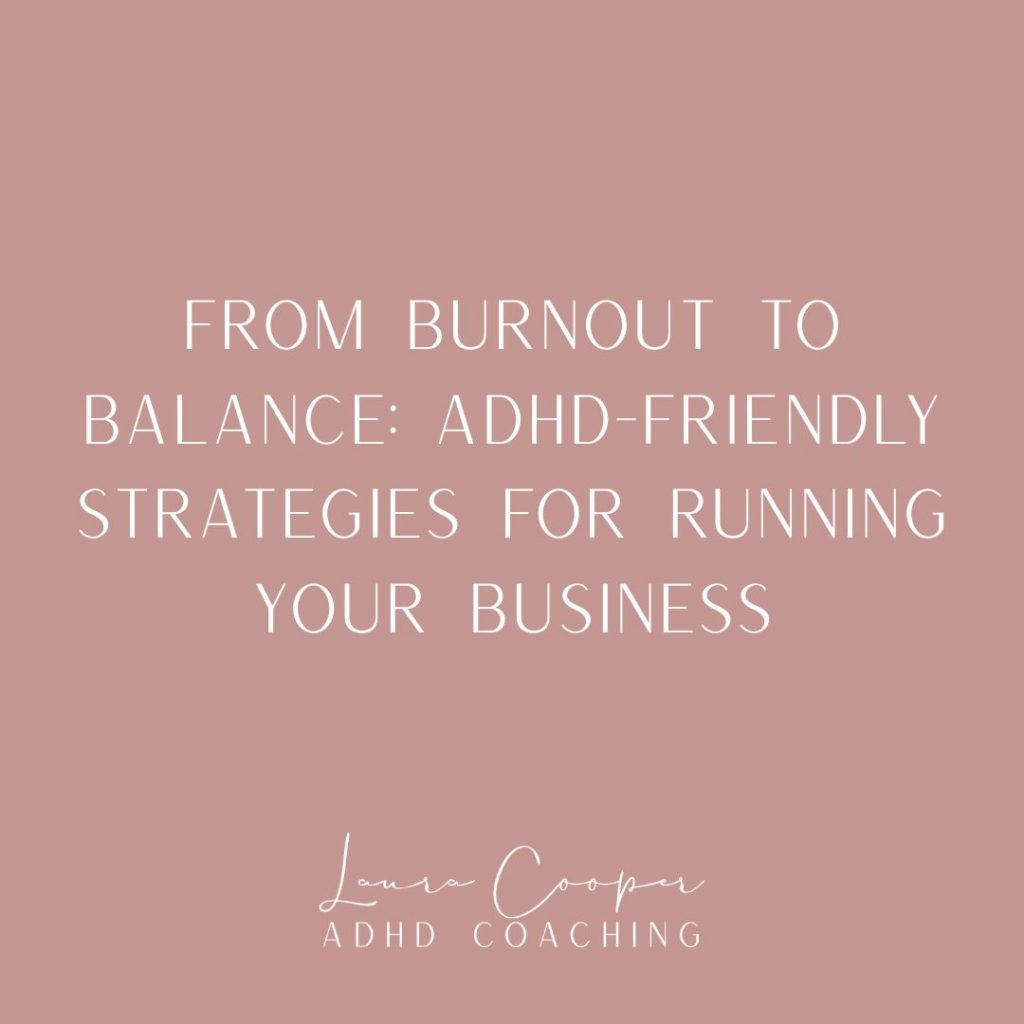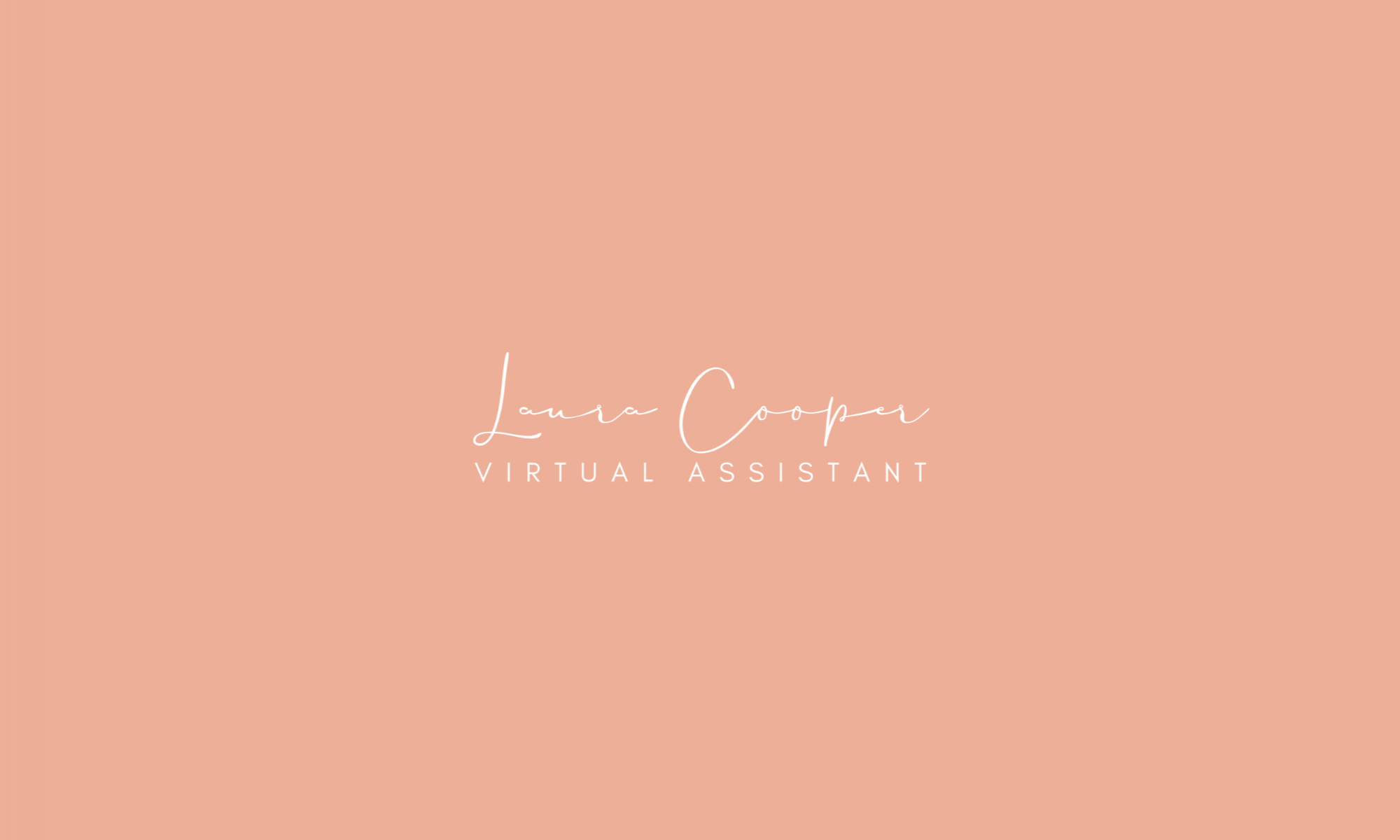
I remember sitting at my office desk, surrounded by half-finished tasks and a to-do list longer than my arm. The hum of my two young children in the background. My brain was foggy and my body exhausted. And despite all the effort I was putting into my VA business, I felt like I was getting nowhere. I’d been running a successful business for several years, why was it now so hard to do even the basics? That was my ADHD burnout moment, and I didn’t even realise it at the time. I didn’t know how to avoid ADHD burn out. I didn’t even know I had ADHD.
If you’re a woman with ADHD running your own business, chances are you recognise that feeling. The crushing weight of responsibility. Mental fatigue and the push to “keep going” even when your brain is waving a red flag. Because it’s not laziness and it’s not failure. It’s a system that isn’t working for the way your mind is wired.
The good news is you can build a business that supports your brain. One that feels energising, not exhausting. I’ve done it and I’m going to walk you through what I did. Most importantly, what ADHD burnout looks like, how to recover, and how to adapt your business so you don’t end up in that cycle again.
What ADHD Burnout Looks Like (And Why It’s Different)
Burn out is tough for anyone, but for ADHDers, it can hit deeper and last longer. Why? Because we are pushing ourselves harder to keep up with expectations of a world not designed for us.
ADHD burn out is an intense state of emotional, mental and physical exhaustion. It’s an exhaustion that comes from the effort required to navigate this world. Alongside managing our ADHD experience. That includes managing our traits and dealing with sensory overload. All whilst managing the mental effort required for masking. We mask, overcommit, underestimate how long things take, and try to do everything, all at once. Our nervous system has been experiencing dysregulation for years. We only know survival mode.
For me, the signs looked like this:
- I was constantly switching between tasks, but finishing very little.
- I’d dread opening my laptop, even though I loved my work in theory.
- I couldn’t concentrate, even on simple things like emails.
- I felt emotionally drained, unmotivated, and more irritable than usual.
- I was emotionally detached and numb.
- I was physically exhausted and in a lot of physical pain.
If any of this sounds familiar, you’re not alone. And you’re not broken. Your business just wasn’t built with your brain in mind.
How to Recover from ADHD Burnout (Without More Overwhelm) and How to Avoid ADHD Burn Out Moving Forward
Here’s what helped me begin to recover, gently and without adding to the overwhelm. It’s also how to avoid ADHD burn out in the future.
1. Permission to Pause
You don’t need to earn rest. ADHD burnout recovery starts with stopping. This can be incredibly uncomfortable. Especially if you’re used to pushing through, but it’s essential. Start with small, restorative breaks. Rest might look like reading, walking, doodling, or doing one thing at a time. Not all rest needs to be stillness, but it should give your mind space.
2. Cut the Noise
During burnout, your executive functioning is running on empty. Minimise decisions. Say no (or “not now”) wherever possible. I cut my offers down to one service for new clients. I focused on my current clients, and simplified my entire schedule. Focus only on what’s essential. The rest can wait.
3. Dopamine, Gently
When you’re burnt out, chasing dopamine in big ways (like launching a new business idea!) can backfire. Try low-stakes, feel-good activities that light up your brain without pressure. Such as music, movement, creating something, being outdoors. Even tidying one drawer or ticking off one task can help you feel a bit more “you”.
4. Put the phone down
Doom scrolling is not what you need right now. Phones feed in to the overwhelm and are highly addictive for us dopamine chasers. Set routines so social media apps automatically close after 5 minutes. Or better yet, only allow you to access them at very specific times for a very limited time. Even better? If you can manage all your social media on your laptop, uninstall social media apps from your phone. When our brains are overwhelmed, we need to reduce the negative distractions.
5. Embrace the simple things
Walks in nature, reading a book, a chat with a friend, all such simple things. But often the things we stop doing when we are in burn out. Schedule simple things that bring you joy in to your day. They are good for the soul and help to bring clarity.
Meditation in the traditional sense can be hard for us. But taking a few moments to breathe can be enough of a positive disruptor, when overwhelmed. Simply focusing on our breath can help us focus. A physiological sigh is a quick but effective calming technique. If you can, meditation it is a great tool. There are lots of great guided meditations out there. Give yourself permission to have, and trust that you deserve, moments of calm. Our nervous system has been dysregulated for years and it will take time to undo that. This isn’t a quick fix. But it is a strategy you can learn and rely on time and time again.
6. Focus on your health
I’m not going to tell you to completely overhaul your life. However, if your physical and/or mental health have not been a priority recently, you don’t need me to tell you how you are feeling as a result of that. You know the habits in your life that are doing you a disservice? Reduce those. Increase those that make you feel better. If you need some simple suggestions start with these:
- drink more water
- reduce your caffeine and alcohol intake
- move a little more
- breathe
- prioritise good sleep
Neurodivergent people are much more likely to have mental health concerns. We also have higher rates of chronic illnesses and autoimmune disorders. See a doctor if you need support or have been ignoring any symptoms.
7. Reflect With Kindness
Once you’ve got some distance, gently reflect:
- What drained me most?
- What did I keep saying yes to that I didn’t want to do?
- Which parts of my business felt heavy or confusing?
This is where the gold is. Burnout isn’t just something to recover from. It’s something to learn through and how to avoid ADHD burn out in the future.
Creating a Business That Supports Your ADHD (Not Drain It) and How to Avoid ADHD Burn Out in the Future
After that burnout, I didn’t just want to survive, I wanted to thrive. I wanted to know how to avoid ADHD burn out. I spent 4 years on my recovery and educating myself. Then I rebuilt my business from the ground up. Most importantly, not to be more “productive”, but to be more ADHD-friendly. Here’s what helped me (and what I can help you to do too):
Work With Your Brain, Not Against It
Notice when your brain works best, and when it doesn’t. I schedule creative and social activities in the mornings. Admin is done in the afternoons. I always keep buffer time for when life/kids/executive dysfunction happens.
Structure That’s Flexible
Rigid routines never worked for me. So now I use loose structures. Theme days, visual planners and simple digital tools (like Trello or Notion). I set recurring reminders that stop me from forgetting the basics.
Simplify Your Offers
Too many offers = too many decisions.
For example, I now offer fewer services, but ones I love and can deliver easily. As a result, this reduces context switching and allows me to go deeper, not wider.
Automate, Delegate, Eliminate
Not every task needs you. Look at what can be automated. For example emails, invoicing. What can be delegated (social media, inbox), or deleted altogether. Your time and energy are precious, spend them where they matter most.
Boundaries Are Not Optional If You Want to Avoid Burn Out (Especially With ADHD)
I used to say yes to everything, every client, every deadline, every opportunity. But boundaries are the fence that protect your focus and wellbeing.
Set clear working hours. Create policies that serve you. Learn to say “I don’t have capacity right now” without guilt.
You’re not being difficult, you’re honouring your brain.
Sustainable Support: You Don’t Have To Do It Alone
You’re doing something incredible: running a business with a neurodivergent brain. That takes creativity, resilience, and strength. But you don’t have to do it all on your own. Whether it’s ADHD coaching, joining a community, or just talking to someone who gets it. Finding support is part of sustainability, not a sign of weakness.
Final Thoughts: Your Brain Is Not the Problem. The System Is
Since rebuilding my business to fit me, everything changed. I’m now building a business that not only supports my brain — it works because of my ADHD, not in spite of it. If you’re stuck in the burnout loop, know this: you don’t need to work harder. In fact you need a business that works differently. One that fits the way your brilliant, creative, idea-filled brain actually operates. You deserve rest and a feeling of ease. And you deserve success on your own terms.
✨ Want to Create an ADHD-Friendly Business and avoid burn out in the future?
I help people with ADHD design sustainable businesses that feel good to run (and don’t lead to burnout). I want to show you how to avoid ADHD burn out. If you’re ready to start building a business that supports your brain, I’d love to chat. 👉 Book a free discovery call with me here
💬 Over to you: What’s one small change you’ve made in your business that’s helped your ADHD brain thrive and avoid ADHD burn out?
Share in the comments — I’d love to hear!
📥 Free Download: 5 ADHD-Friendly Activities to avoid ADHD burn out in your small business
Grab your free copy here → 5 ADHD-Friendly Activities for a Burn Out Free Business
